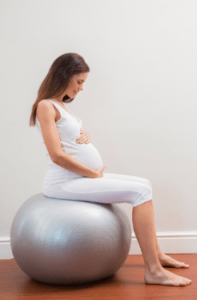Expecting your own bundle of joy? Check out our book is available on Amazon in both digital RIGHT HERE and print formats RIGHT HERE
It’s no secret that an expectant mother’s body undergoes many changes during the course of her pregnancy. Most women understand many of the changes they will experience during their nine months, but some are not spoken about as commonly as morning sickness, back pain, and swollen feet. Braxton Hicks contractions are one such example. Braxton Hicks contractions can cause alarm if you’re not prepared for them, but there’s no need to panic. These contractions are perfectly normal and are commonly experienced during the later stages of pregnancy.
Braxton Hicks contractions are named after John Braxton Hicks, the physician who first described them all the way back in 1872. Since then, many studies have been conducted on the phenomenon, and we have a better understanding of what these contractions are. You may also hear Braxton Hicks contractions referred to as “false contractions” or “practice contractions” because that’s essentially what they are. They cause the expectant mother to experience false labor pains but are much less painful, come and go, and do not indicate labor in any way.
What Are Braxton Hicks Contractions?
So what exactly are Braxton Hicks contractions? During the late stages of pregnancy (typically third trimester but occasionally the end of the second), a woman’s body will begin to prepare itself for handling the stress of labor and birth. To do so, it may initiate Braxton-Hick contractions. You may be thinking “contractions mean I’m going into labor!” but we assure you that these are different. Braxton Hicks contractions are solely meant to “practice” for labor. The uterine walls contract and relax, but not with the same force or purpose as during real labor. If you’re in your third trimester, it makes sense to think that Braxton Hicks contractions are actually the real thing, but there are a few telltale signs to prove that baby is not yet on the way.
The Main Signs of Braxton Hicks Contractions
- Contractions that come and go
- Contractions that have no identifiable pattern
- Contractions that go away when you shift positions
- Contractions that do not get stronger over time
- Pain is experienced only in the front and does not migrate
If you experience contractions that come and go irregularly and do not get closer together, they are almost certainly Braxton Hicks contractions. Some women find that the “practice contractions” stop when they change positions, walk around, or take a break. Real contractions do not stop for anything! You can also distinguish between Braxton Hicks contractions and true labor by monitoring your level of pain. True contractions hurt much more than Braxton Hicks contractions, and the pain radiates from the front to the back. Braxton Hicks contractions often feel more like cramps or tightness rather than true pain and they’re only felt in the front of the body. If any of the above signs apply to what you’re experiencing, your body is likely just giving you a practice run in preparation for the real thing.
Are There Triggers That Can Cause Braxton Hicks Contractions?
Sometimes, Braxton Hicks contractions begin for no apparent reason. This is simply the body deciding it’s time for a bit of pre-labor practice. Studies have shown that certain conditions can act as a trigger for false labor that you should be aware of so the Braxton Hicks contractions don’t take you by surprise.
- When the mother (or the fetus) is particularly active
- If the bladder is full
- After sexual intercourse
- If the mother is dehydrated
If you experience Braxton Hicks contractions, try to see if any of these triggers apply to you. As we said, they could start without cause, but pinpointing a possible trigger can ease anxiety about the situation.
What Can You Do To Stop Braxton Hicks Contractions?
While there’s no reason to worry about Braxton Hicks contractions, they can get irritating if you experience them frequently. If you’re trying to stop the contractions quickly, try out these recommended “treatments”.
- Change Position: simply rolling over, sitting down, standing up, or general shifting can be enough to get the pressure off of your uterus and stop the Braxton Hicks contractions.
- Drink A Few Glasses of Water: If your false labor was brought on by dehydration, water is an easy fix.
- Rest: If you were active prior to experiencing contractions, take a breather and see if they stop.
- Try Light Stretches or Exercises: If you have been sitting in one position all day, get up and do some light exercise to try to stop your Braxton Hicks contractions
- Take a Warm Bath: Warm water relaxes muscles and can stop your uterus from tightening. Plus, who doesn’t love a warm bath?
We hope you have a better understanding of Braxton Hicks contractions. They can take you by surprise and put a temporary pause on plans, but they are nothing to worry about. Don’t panic, check the frequency and severity of the contractions, and try to identify any possible triggers. Your Braxton Hicks contractions should go away shortly even if you do not try any “treatments.” If you notice your contractions getting stronger, more frequent, and more painful, contact your doctor right away. You may be experiencing true labor, and your healthcare professional can help you figure out your next course of action.
For more information about pregnancy and all of the things that go with it, check out the Twin Doctor’s book “Everything You Ever Wanted to Know About Pregnancy But Were Too Embarrassed to Ask”.
Expecting your own bundle of joy? Check out our book is available on Amazon in both digital RIGHT HERE and print formats RIGHT HERE
Be sure to check out our website www.TheTwinDoctors.com and please connect with us on all of our social media outlets at TwinDoctorsTV.










 May 19, 2018
May 19, 2018 


 October 26, 2020
October 26, 2020 
